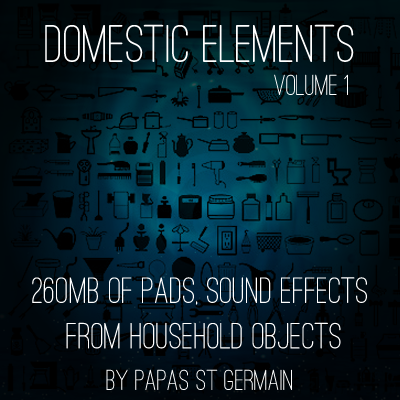Final Product Design and Structure
sampledelicsounds.comsampleism.com
The final stage of the project was to ensure that the design and structure of the product would be both professional and user friendly.
The organization of the library would be clear where the user has quick access to the sample files they require and also would have a pre conceived notion of how the file may sound based on the short description/name given to each sound file.
 The folders inside the library were all to be clearly labeled with clear distinctions being made between percussive loops, unprocessed and processed loops, tempos, pad and keyboard sounds, glitch effects and atmospheric sound effects.
The folders inside the library were all to be clearly labeled with clear distinctions being made between percussive loops, unprocessed and processed loops, tempos, pad and keyboard sounds, glitch effects and atmospheric sound effects.This classification of sounds and organization of individual audio files was essential to the library being a functional user friendly product. The superficial design aspects of the product would include a CD where a cover and CD label would be designed and published. The design of a cover, typography, labeling and presentation of the product, all contribute to highlighting the nature of the project and the market that it is aimed at as well as conveying a professional attitude to the creation and promotion of the sample library.
It was decided early on in the project, the file format in which the library would be delivered would be WAV files. WAV files were the standard format used throughout the project and this is a useful format in terms of compatibility with other DAWS as well as being of a high quality to transfer to CD. Many of the WAV files throughout the project were rendered and bounced to 24 bit at 48Khz and 41Khz to help preserve a quality control of the sound files over the whole project.For future sample libraries it is debatable if Producing a physical CD is worthwhile but for the purpose of this project ,a small run was produced.I would argue that downloads are more convenient and immediate for the customer.
 The size of the main sample library, not including the raw Foley recordings would be about 1Gb which was the size of library that I had intended from the start and was in keeping with the type of size of library produced by sample library companies when releasing libraries of a similar style and nature. The finalized library consists of a file size of roughly 1.1 Gb with 9 main section folders and some further sub section folders leading off from the main categories.
The size of the main sample library, not including the raw Foley recordings would be about 1Gb which was the size of library that I had intended from the start and was in keeping with the type of size of library produced by sample library companies when releasing libraries of a similar style and nature. The finalized library consists of a file size of roughly 1.1 Gb with 9 main section folders and some further sub section folders leading off from the main categories.Although a 3 track EP was created for the purpose of promoting the library, I also created a small folder containing 10 samples both in WAV and mp3 formats. This was designed as a taster for the types of sounds which would be in the project.
These small folders would be sent to sample library companies and music technology publications with the intention of getting some industry feedback and opinion.
For graphic design elements, the software program Gimp was used. Gimp was useful in importing images into the software and being able to manipulate the imported images, adds graphics, change colours and scale images to different sizes.
This software would be invaluable in providing images for the sample library CD cover, promotional EP cover, posters and CD disc design aspects.
This is the last post on the creation of the Domestic Elements series.Hopefully it showed some insight into the process involved in creating a sample library.Domestic Elements is available at sampledelicsounds.com and sampleism.com
No comments:
Post a Comment